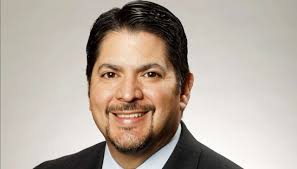Recently, two items came across my energy news feed within a few days of one another, each underscoring a different aspect of the ongoing challenge of maintaining a reliable electricity supply on a rapidly changing electric grid. The first item was an a report from the consultancy E3, proposing a way of thinking about and ensuring reliability during times of particular grid stress — E3 calls them “critical periods.”[1] The second was a conversation about reliability on the Energy Capital Podcast, between Doug Lewin (the host) and Rudy Garza, the Director of CPS, the San Antonio TX municipal utility.
Both of these items touched on the issue of the day — the coming energy crunch caused by rapid load (electricity demand) growth. But both discussions were broader that. More interesting to me was what the E3 report and Rudy Garza had to say about ways to keep the lights on as the electric grid relies more and more on variable and weather dependent resources. Garza extolled the virtues of demand response and other distributed energy resources (DERs) as a tool for keeping the grid in balance. And the E3 report offered ways of thinking about a variety of different types of grid stress events, and how to ensure the optimal mix of resources so that grid operators can keep the lights on when each of those types of events occur.
A lot of the material on this topic that one finds online is from devotees of letting the market solve the problem, or of the idea that central planning is required to do so. Each might present the facts quite differently. So here’s one relatively agnostic take on this unavoidably jargony problem.
The reliability challenge across time and place
Maintaining a reliable electricity supply means keeping supply and demand in balance. For most of electric grid’s existence that has meant varying the amount of power being dispatched onto the grid so as to match variation in customer demand. Matching variation in daily demand is a different challenge than matching seasonal variations. And keeping the lights on during once a year cold snaps is different than the challenge of keeping the lights on during a once a decade heat wave or wind drought. Similarly, accomplishing each of those tasks is different in California than in Texas, and different in Minnesota than either California and Texas.
In the past, when all of those places were served entirely by traditional, large, central station generators — coal- and gas-fired power plants, nuclear plants and hydro stations with spinning turbines – all of those reliability challenges were conceptually simpler to meet than they are today. Monopoly utilities owned all the grid infrastructure, and they built enough generating capacity to ensure a reliable supply all the time (or nearly all the time). Ratepayers paid for the cost of doing so — even if it meant that some generating plants sat idle most of the time.
Central planners justified this approach using the idea of the value of lost load (VOLL). That is, they built a bigger and bigger system, reducing the probability of outages, until the cost of additional generating capacity equaled the cost — or the “value” (to customers) — of avoiding the outage that the next unit of investment would avert. But utility critics argue that VOLL is a poor metric for optimizing grid size.
In recent decades, two important developments have complicated the task of keeping the grid in balance. The first was the 1990s and early 2000s restructuring of electricity markets in some parts of the country. Restructuring brought competition and market pricing into some markets, and separated ownership of the transmission and distribution wires from ownership of generating stations in those places. That means that the wires companies remain in charge of keeping the lights on, but lack direct ownership control over the electricity supply. So instead, regulators and regional grid operators use a variety of regulatory carrots and sticks to try to incentivize investors to build the right type and amount of generation in the right places.
The second big change was the early 21st century decline in the cost of generating electricity from wind and solar power. These two sources of power have commanded the lion’s share of new generation over the last few decades because they are inexpensive and clean sources of power. These sources are also more variable in their output – both diurnally and seasonally – than traditional generators. Wind speeds vary, and a wind turbine’s output varies accordingly; and when clouds obscure the sun, the output of solar panels decreases a bit.[2] So as these resources gain market share, matching supply and demand must account for variation not just on the demand side, but on the supply side as well.
These challenges are not insurmountable. To the contrary, grid operators and market participants tend inevitably to find technical solutions to them over time. But they do complicate the task of keeping the lights on, as do other recent changes to the system, like changes in historical weather patterns due to climate change, and of course the growth of large new loads like data centers.
CPS’ & “Virtual Power Plants”
In the Lewin podcast Rudy Garza explains how CPS uses DERs to compensate for variability on both the supply and demand side. DERs include not only distributed generation like rooftop solar panels, but also demand response (compensated reductions in customer demand when needed) and behind-the-meter battery storage. When managed by an aggregator, these resources can act like a “virtual” power plant (VPP), mimicking the way a gas-fired turbine might ramp (vary its output) up and down on short notice to keep the grid in balance.
And the CPS’ experience addresses two concerns raised by critics of VPPs. First, it demonstrates that VPPs “show up” when called upon. They can be not only a relatively clean and cost-effective resource, but also a reliable one. Second, CPS’ experience shows that residential customers can be an important part of a VPP. About half of the demand response resources on which CPS periodically relies come from households. Thus, CPS sees aggregated DERs as a reliable tool for keeping the grid in balance, and for reducing their purchases of wholesale power when spot prices are high.
These are all important benefits of VPPs, which are under-realized in most utility systems. For that and other reasons, CPS’ approach is music to the ears of advocates of a more decentralized electricity system. Many of them see IOUs as the primary impediment to cheaper, cleaner electricity markets, and argue that traditional grid-centric planning processes yield an overbuilt system. They envision a future in which much more reliance on DERs will bring rates down by eliminating the need for more generation and transmission, which after all are plagued by upstream supply delays (e.g., for gas turbines), NIMBY opposition and the cost effects of Trump tariffs. And many see markets, not utility central planning, as an integral part of that decentralized system.
But a note of caution: CPS’ experience speaks to the performance of VPPs in the task of balancing supply and demand daily and seasonally. It does not address rarer, extended grid stress events associated with severe weather. That’s where the E3 report comes in.
E3 and Rare “Critical” Periods
The E3 report is wonky, in part because it is aimed at an audience of energy policy wonks. It seeks to influence the way energy market planners assess the reliability value of particular grid-supply-side resources when planning for a future of demand growth, with special emphasis on critical periods.
E3 is an economics consultancy that is in the business of modeling the future of (parts of) the grid for its clients. Here is how E3 explains the value of their analysis:
The key feature of the critical periods reliability framework is a reorientation of all aspects of resource adequacy planning away from an exclusive focus on peak demand periods and toward a focus on critical periods when a loss-of-load event is occurring or imminent. Both loads and resources are evaluated based on the marginal impact of their actions on system reliability. By focusing on conditions during critical periods, this framework identifies and compensates actions such as new generation investments or voluntary load reductions that directly reduce the probability of lost load.
On a changing grid in which supply variation and demand growth are a much more common cause of critical periods, we need to think about the reliability value of existing and proposed new resources differently than in the past. E3 emphasizes the importance of complementary resources – those that are available when existing resources on the system are not. For example, in systems with lots of solar power, wind power (which blows at night) adds more reliability value than more solar; in places with nighttime wind generation, solar power adds more reliability value than more wind. In places with lots of wind and solar (like Texas), more firm resources like natural gas-fired power, battery storage, or nuclear power add more reliability value.
This is common sense, and in some ways a return to the old electric utility sector goal of having “fuel diversity.” But E3 proposes a way to assign metrics to this complementarity value, one that builds on existing metrics like electric load carrying capacity (ELCC) and loss of load probability (LOLP). E3 sees the reliability value of a given resource as a function of its marginal effect on the availability and performance of the system during critical periods.
VPPs can be valued in this way, as can all forms of grid-centric generation. But E3’s perspective is different from that of VPP proponents who envision a decentralized transactive power market replacing a centrally managed grid. Indeed, E3’s analysis is explicitly skeptical of the ability of markets to optimize the grid.
Two views of the new reliability challenge
This question of whether resource planning or market forces best optimizes the grid is one that divides energy policy scholars. For at least a half century economists and their allies have bemoaned the way traditional utility ratemaking incentivizes a “gold plated” system, one that invests in too much infrastructure in order to pad utility shareholder returns. Others are skeptical of the ability of markets to ever get prices right, and argue that customers are willing to pay a premium for supply certainty. (I summarize this scholarly debate in chapter 5 of Climate of Contempt.)
But it seems clear that politicians and regulators fear an underbuilt system more than an overbuilt one. So, in systems with enough traditionally-dispatchable generation (and associated transmission capacity), they see VPPs as a win-win; they bring power prices down and reduce carbon emissions, all without jeopardizing reliability. But if those lower prices cause traditionally-dispatchable resources to exit the system, will renewables + storage + VPPs be enough to maintain a grid that is reliable enough to avoid the kind of severe-weather extended outage that politicians and regulators fear? Policymakers worry that the answer might be “no.”
Interestingly, neither E3 nor Rudy Garza wants to take the risk. It is clear from the Garza interview that he sees VPPs as a way to enhance reliability now while CPP tries to build much more gas-fired generation to address soaring demand. And E3’s critical periods reliability metric suggests why this is so. CPS takes power from the wind- and solar-heavy Texas grid. It has traditionally relied on fossil fueled power — some of which is quite old — for about half of its generation. While solar power and VPPs are helping it to avoid summer price spikes during grid stress events, Garza sees central planning and more grid-based power plants as a way for CPS to keep the lights on in San Antonio.
Low-carbon alternatives like geothermal power, nuclear, gas-fired power with carbon emissions controls, long-duration storage could fill the void, but they are more expensive than carbon-emitting gas-fired power. In places with no carbon reduction mandate electricity retailers will not choose those options while rising power prices dominate headlines.
Meanwhile, the argument over which imperfect system — central planning or markets — best serves the public interest will probably never be resolved. As utilities worry about serving soaring demand for electricity in the coming years, the resourceful ones will find ways to exploit underused DERs-as-VPPs, following the CPS example. But chances are that most will also want to ensure that their systems are ready to keep the lights on during every type of critical period. For now, that probably implies adding more batteries and natural gas-fired power plants to the grid to complement the growth of inexpensive wind and solar power. — David Spence
——————-
[i] Resource Adequacy for the Energy Transition: A Critical Periods Reliability Framework and its Application in Planning and Markets (2025).
[2] Technological advances have reduced some of this variation, but not all of it. For solar, the angle of the sun and cloud cover still cause some output variation; the same is true of varation in wind speeds for wind farms.




